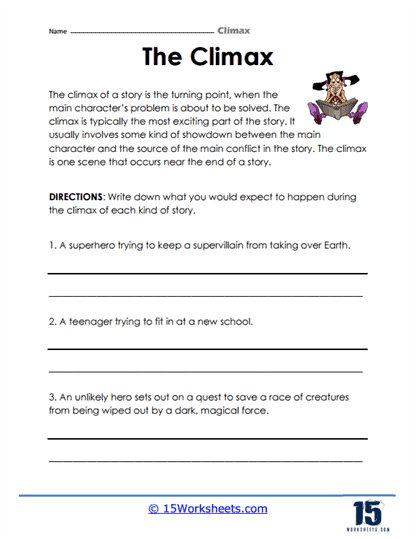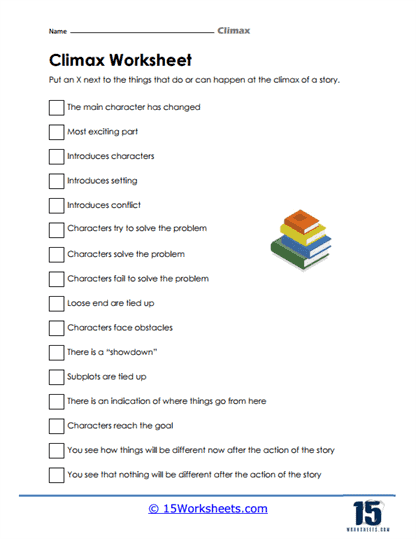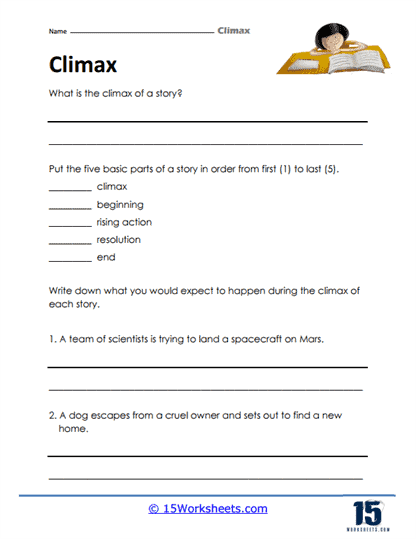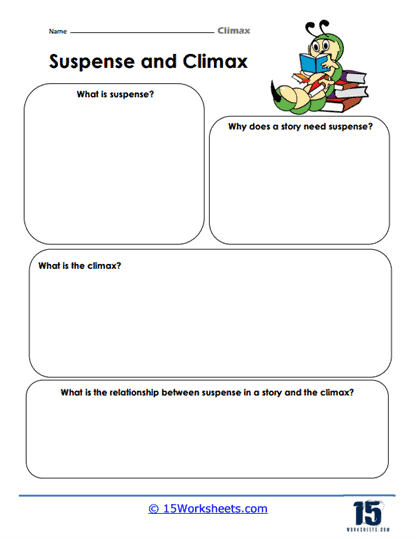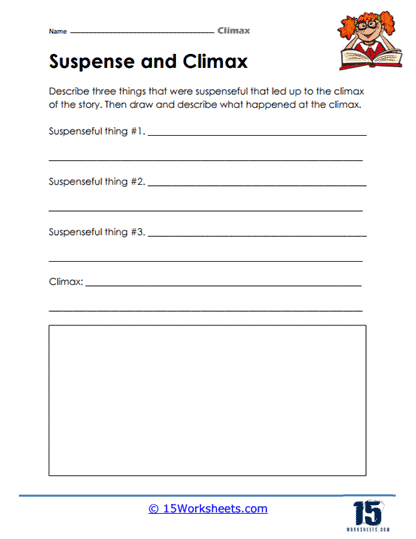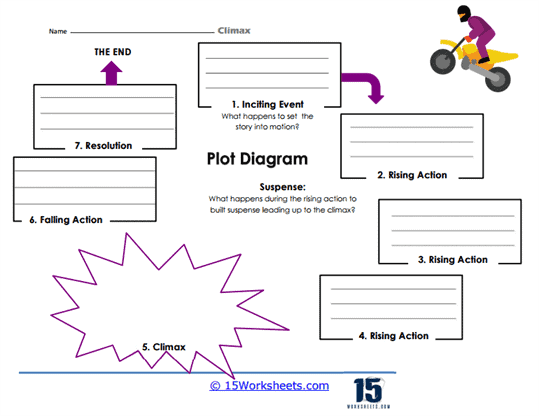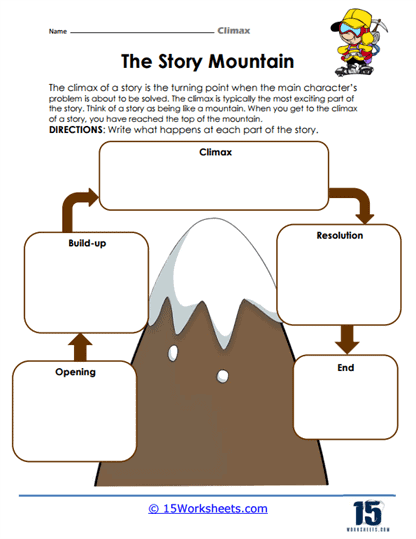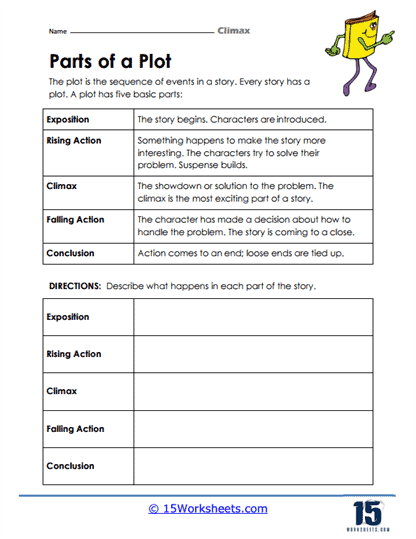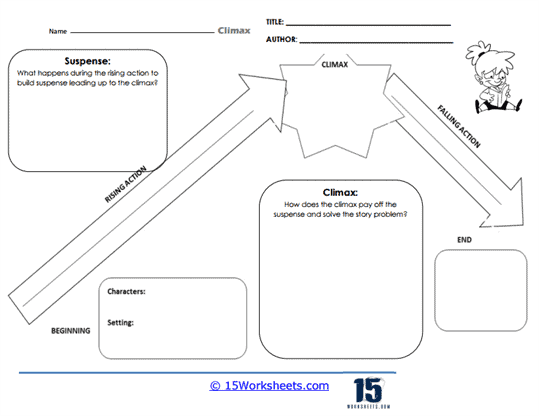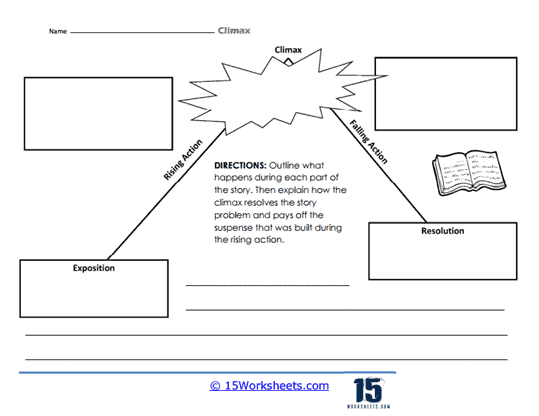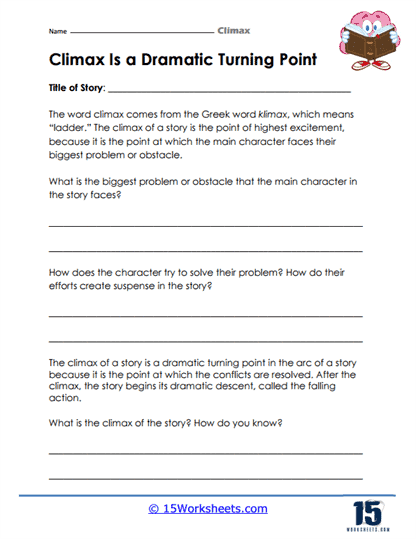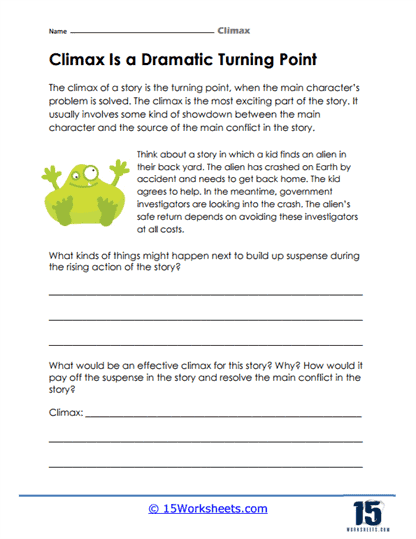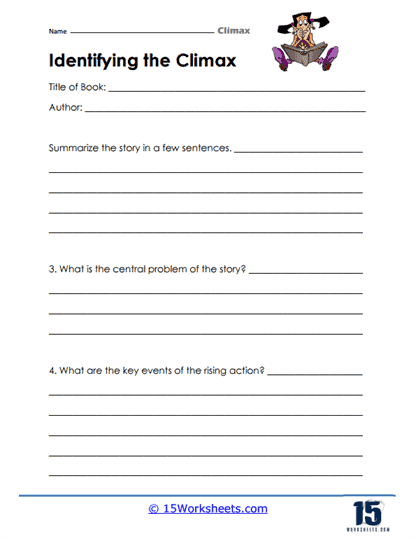Climax Worksheets
All About These 15 Worksheets
The climax, the pivotal point in a narrative where tension and conflict reach their zenith, is a crucial element in storytelling that captivates readers and keeps them engaged. Understanding the climax is not only important for literary analysis but also for developing critical reading skills, storytelling proficiency, and a deeper appreciation of narrative structure. This collection of 15 worksheets is designed to introduce students to the concept of the climax, helping them grasp its importance in storytelling, recognize its various forms, and develop their own narrative mastery.
What Are Climax Worksheets?
Climax worksheets will help you better understand an exciting part of a story called the ‘climax’. You know when you’re reading a book or watching a movie, and you reach a point where everything seems to be at its most intense, and you’re on the edge of your seat wondering what will happen next? That’s the climax! Understanding this concept is key to building strong reading comprehension and creative writing skills.
The exercises in these worksheets can take several forms:
Identification – This might involve reading short stories or descriptions of events and figuring out which part of the story is the climax.
Ordering Story Events – The worksheet could provide different events in a story out of order, and the student’s task would be to arrange them in the correct sequence, including identifying which event is the climax.
Writing Practice – Another type of exercise could be writing a short story or a scene with a clear climax. This would help students practice building up to and writing a climactic moment.
Comparing Climaxes – Students might be asked to compare the climaxes of different stories to understand how they can differ depending on the type of story (like a scary story versus a funny story).
Analyzing Climaxes – For a more in-depth exercise, students could be asked to read a longer passage or an entire short story and to analyze how the climax is built and how it affects the outcome of the story.
These exercises will not only boost your storytelling skills but also make your reading time more enjoyable, as you’ll be able to spot and anticipate the climaxes in the stories you read.
Why Do Authors Use Climax As a Literary Device?
A climax, in terms of a narrative or story, is a key literary device employed by authors to create intrigue, suspense, and engagement. The climax of a story is often referred to as the story’s turning point. It is the moment of highest tension, the peak of the story’s emotional intensity, or the point where the main conflict is addressed or begins to resolve. It’s the point in the story where the reader holds their breath, waiting to see what will happen next.
This literary device is vital as it keeps readers hooked to the story. A well-constructed climax brings the various narrative threads and character development elements together in a decisive moment or series of moments that address the story’s primary conflicts. After the climax, the tension deflates as the story moves towards resolution or denouement. A climax can be a single moment or a sequence of events leading to the most critical part of the story.
Examples of a Climax in Literature
“Harry Potter and the Goblet of Fire” by J.K. Rowling
The climax in this novel occurs during the Triwizard Tournament’s third and final task. Harry and Cedric grab the Triwizard Cup, which turns out to be a Portkey that transports them to a graveyard where Voldemort waits. This leads to a duel between Harry and Voldemort, representing the peak of the conflict. The battle, and Harry’s narrow escape from death, is the turning point in the series, marking a significant escalation in the struggle against Voldemort. This climax works effectively because it’s not just a high-action, high-stakes sequence but also a turning point in Harry’s character arc and the overall narrative arc of the series.
“To Kill a Mockingbird” by Harper Lee
The climax of this novel is the trial of Tom Robinson, a Black man unjustly accused of raping a white woman in a racially prejudiced society. Despite compelling evidence of his innocence presented by Atticus Finch, the jury delivers a guilty verdict, reflecting the deep-seated racial bias of the time. This moment is the climax because it brings the central themes of justice, prejudice, and loss of innocence to the fore. The verdict not only seals Tom Robinson’s fate but also marks a loss of innocence for Scout and Jem, who witness firsthand the injustices their father fights against.
“Romeo and Juliet” by William Shakespeare
The climax of this tragic play happens in Act 3, Scene 1, when Romeo kills Tybalt in a fit of rage after Tybalt kills Mercutio. This act of violence escalates the families’ feud, results in Romeo’s banishment, and ultimately triggers the sequence of events leading to the tragic ending. This scene is climactic because it’s not only fraught with emotion and action but also irrevocably changes the course of the narrative and the fate of the characters.
In each of these examples, the climax serves as a focal point that propels the story towards its conclusion. It brings together the characters, conflicts, and themes that have been developed throughout the narrative and provides a turning point that captivates readers, leaving them eager to find out what happens next. Learning to identify and understand climaxes can enhance readers’ appreciation of narrative structures and the craft of storytelling.
Benefits Of Climax Worksheets To Students
Exploring the concept of the climax through this collection of 15 worksheets offers students an opportunity to develop essential skills in literary analysis, critical reading, storytelling proficiency, emotional engagement, and cultural and historical understanding. The climax is a narrative device that invites students to dissect and appreciate the intricacies of storytelling and character development.
By engaging with these exercises and activities, students not only enhance their academic abilities but also gain valuable tools for constructing compelling narratives, understanding the emotional impact of storytelling, and appreciating the evolution of storytelling conventions across cultures and time periods. The benefits of studying the climax extend far beyond the classroom, empowering students to be more discerning readers, skilled storytellers, and culturally aware individuals in an increasingly interconnected and narrative-driven world.

